
(Review archived from April 25, 2018)
Shoot’em ups are always an interesting genre for me. By and large I completely suck at them, but because I completely suck, it’s almost as if they become that much more interesting to me. They’re like this ungraspable ‘other’ that I can never fully comprehend, and the harder I try to do so, the farther they slip from my grasp. Shmups are therefore my ‘Zen and the Art of Video Games’ if you will; equal parts game and meditative practice. Someday I hope to beat all the games in the Gradius series, and perhaps through this journey I will gain insight into some universal truth … become privy to some all-encompassing universal Life Force. <GROAN>
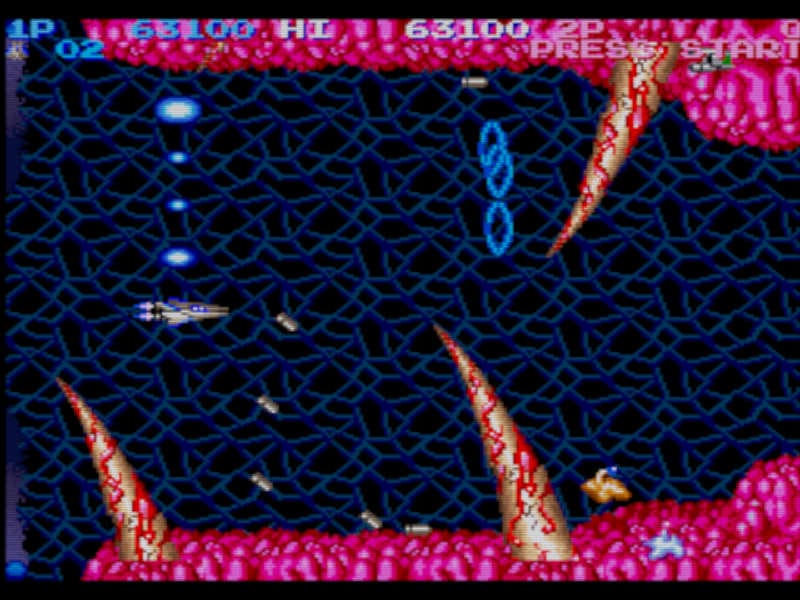
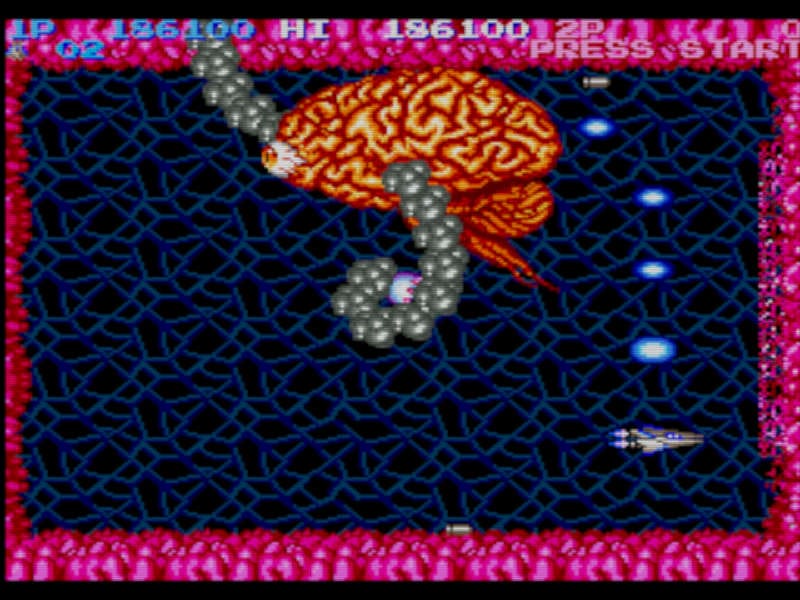
High-minded erudite mumbo jumbo aside, what we have here is the first game in the Salamander (AKA Life Force) series which is set within the same universe as Gradius and which serve both as sequels and side stories to the Gradius line. Having said that, I’m certainly no expert on Gradius lore so if I’m missing any finer points in the timeline or universe at large, please feel free to let me know. The games themselves are not exactly fonts of wisdom in this regard (not that they aren’t brilliant for what they are). What I can tell you is that in this game you are indeed piloting the same Vic Viper space fighter first popularized in Gradius. Given all of these close familial ties, perhaps it’s no surprise then that this game shares many similarities with Gradius. If you’re familiar with practically any Gradius game, you’ll feel right at home with the side-scrolling gameplay in Salamander. Although most enemies aren’t identical to those you find in Gradius, many of them are functional copies. The power-ups are all quite similar as well, with missiles, shields, lasers, and options all functioning identically to their Gradius counterparts. The power-up system however is where we see our first distinctive difference as compared to the Big-G. Whereas Gradius utilizes a ‘power bar’ in which power-ups cycle through predefined selections until such time as they are activated by the player, Salamander utilizes a more ‘traditional’ system in which power-ups take effect immediately upon pick-up. This leads to some interesting strategic implications. In Gradius you have a bit more leverage to actively hone your preferred load-out, while in Salamander you need to stay very conscious of which power-up icons do what, lest you suddenly lose your weapon of choice. And the game will often troll you in this regard by placing less effective power-ups directly before some boss or crucial segment more tailored to some other weapon.
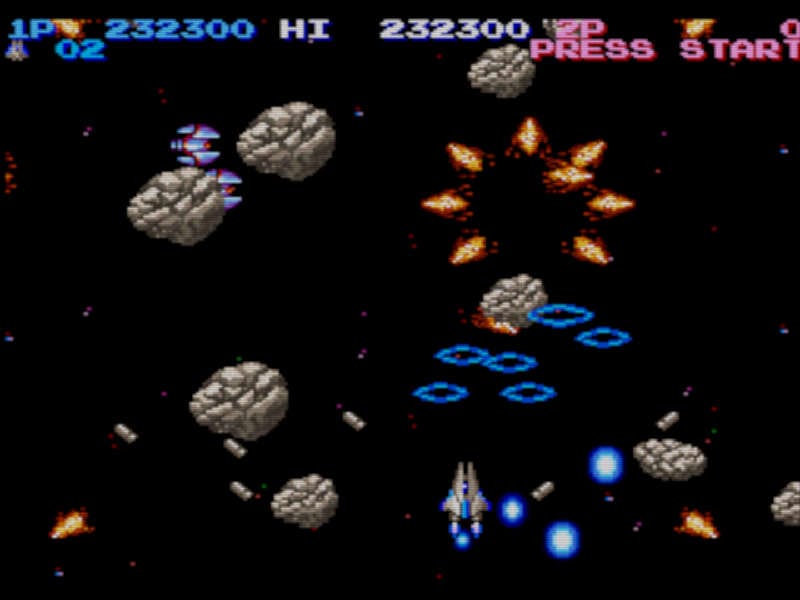
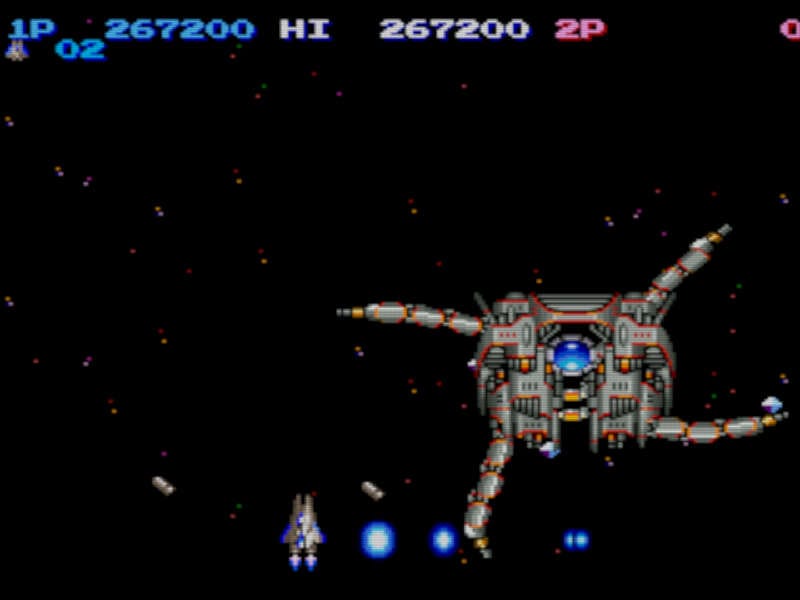
In discussing the ways in which Salamander is different from Gradius though, the most crucial and indeed the defining characteristic of the Salamander series is that it has a mix of both side scrolling and overhead segments. And in freeing itself from purely side-scrolling levels, the obvious implication here is that it allows Salamander an opportunity for more varied gameplay than that found in the base series. In some ways it’s quite successful in this regard. It’s interesting to see how some of the familiar Gradius weapons perform (or fail to perform) in an overhead perspective. It’s not that Salamander breaks any new ground here of course, but it is a fun spin to see the familiar Gradius tropes playing out from above.
Bearing in mind my earlier comments regarding my prowess at shmups (I suck), it needs to be said that I found this game to be much more challenging than Gradius (by which I mean Gradius the game, not Gradius the series). Sure it starts out easy enough, and for a good half of the game I had convinced myself that Salamander was in fact a good deal easier than Gradius. But somewhere around the level 4 boss, Salamander flips a giant switch. And that switch is labeled, “Fuck you and everything you stand for”. Beyond that point the game becomes less about reflexes (though that certainly helps!) and more about pattern memorization. It’s still a good game, just not a terribly forgiving one. At least to this end there are some concessions to be made, such as the fact that after your ship is destroyed you resume play immediately from where you left off. Furthermore after death, you leave behind any options you’ve collected so that you can pick them up again with the next ship (assuming you’re quick enough). All the same there are no continues in the 1 player game, something sure to delight the “1CC or die” set. So despite some concessions this is in no way a (space) walk in the park.
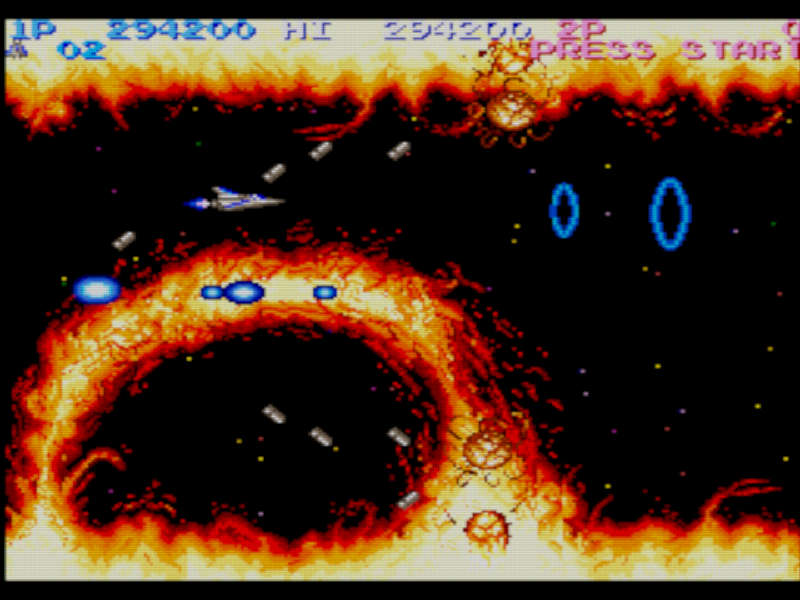

As if all of the above wasn’t indication enough, I’m really not the best judge of shmup games. Having said that, I enjoyed my time with Salamander despite some intermittent frustration with difficulty. I feel confident in recommending Salamander if you’re a fan of Gradius games, and more to the point I think it’s pretty safe to call Salamander a classic in its genre. If any of this sounds appealing to you, then Salamander is your jam.
Leave a Reply